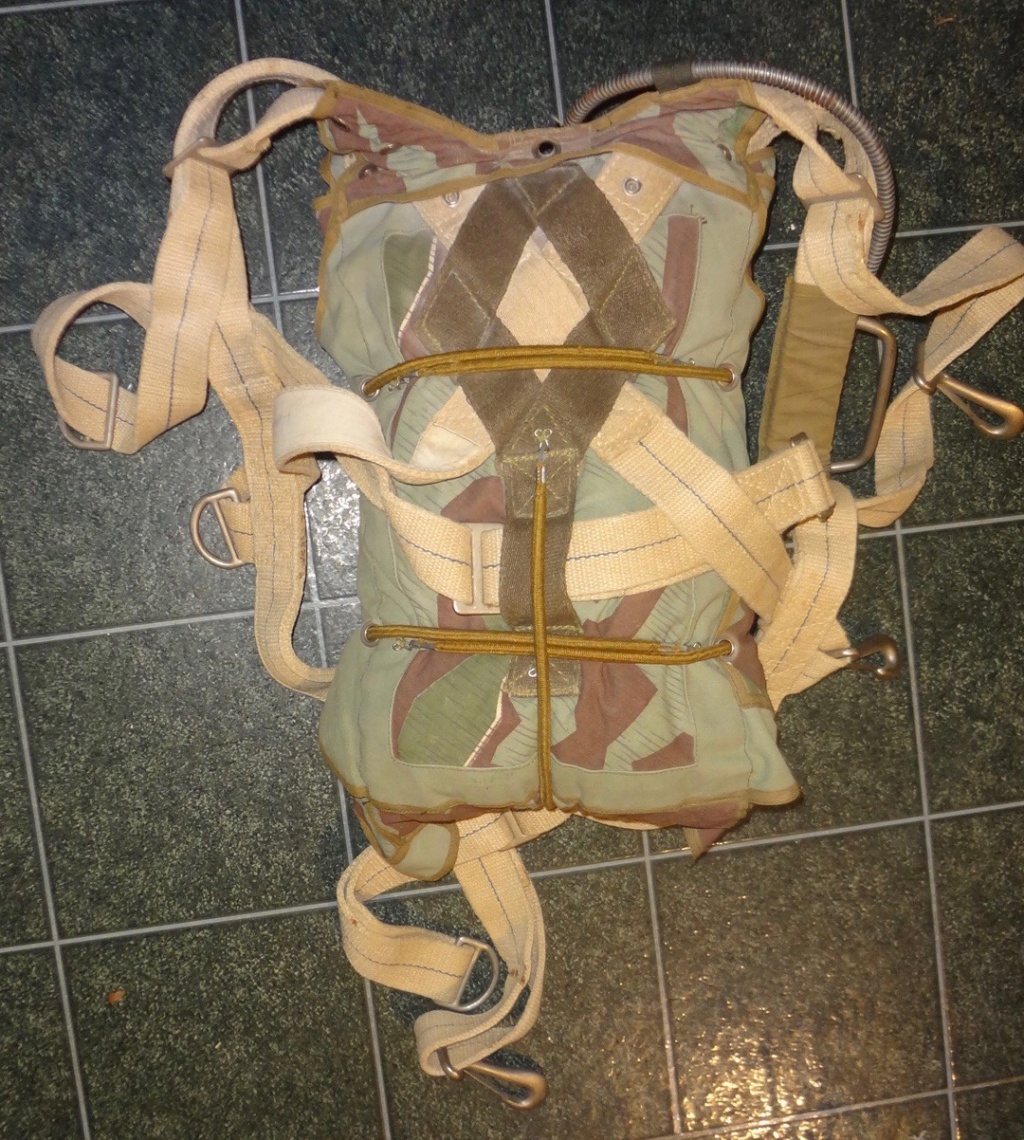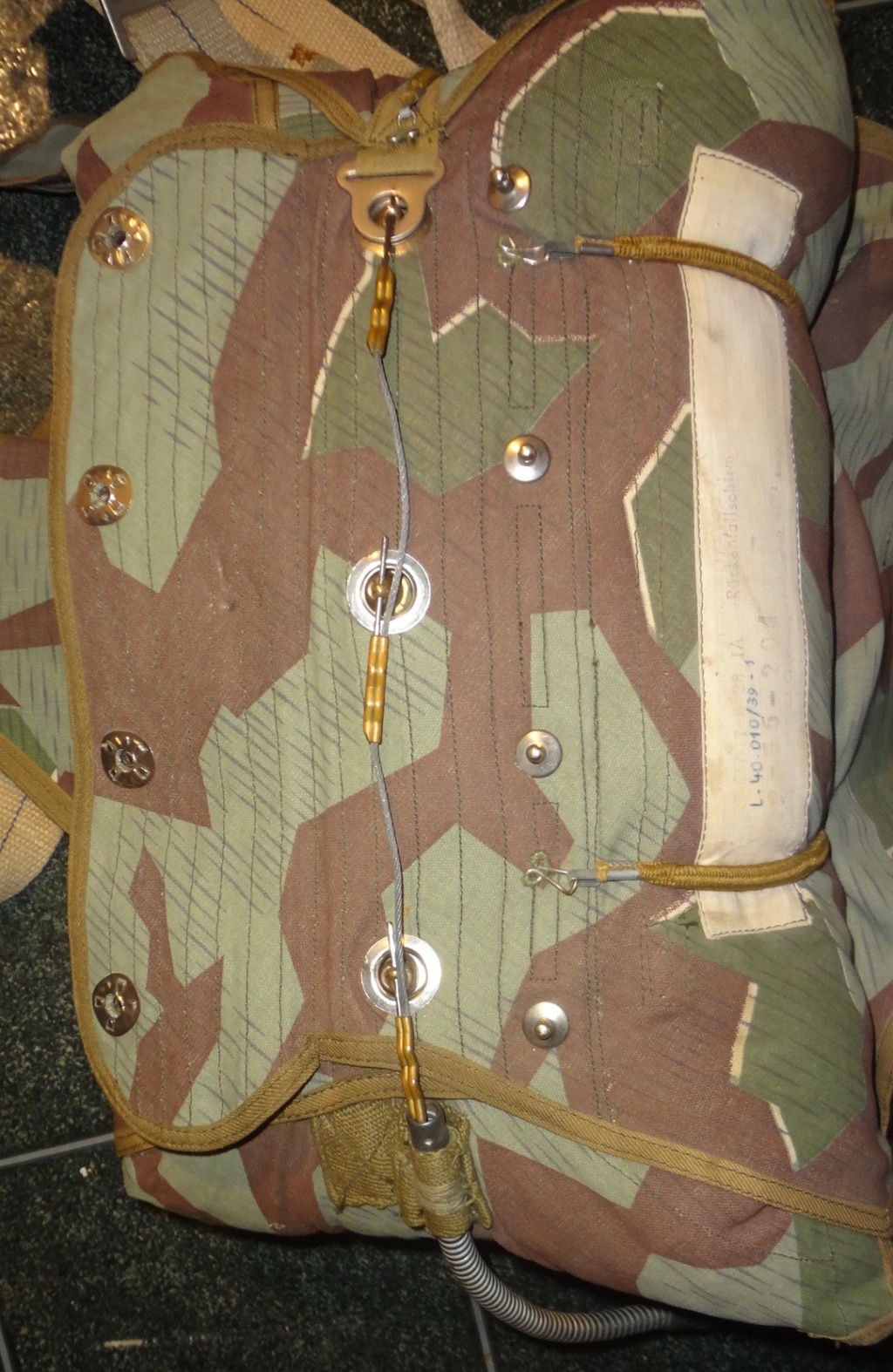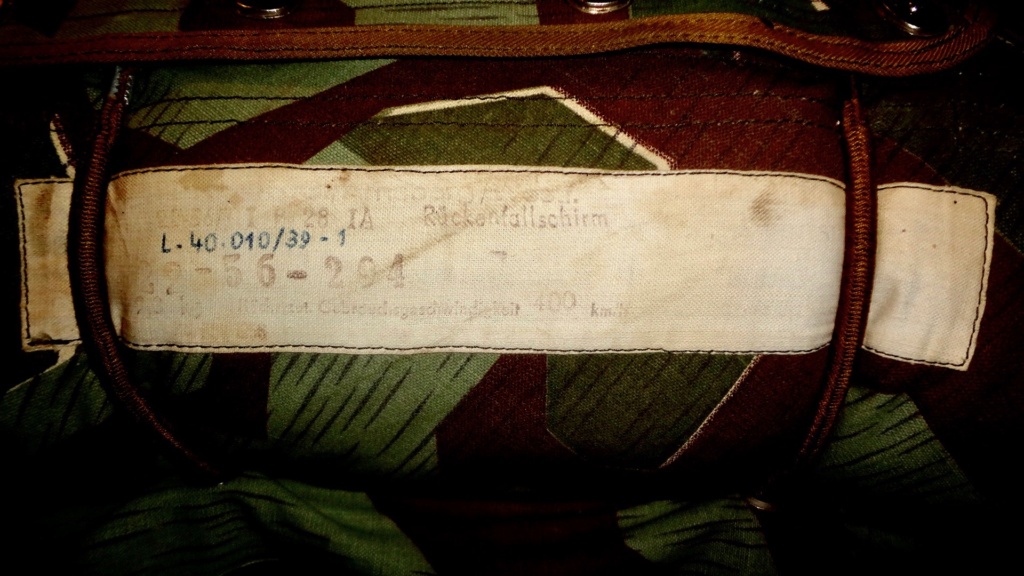Just when I thought there was nothing else interesting for me to add to my Bundeswehr collection, along came this apparent one-of-a-kind item! It is a 1956 dated BW parachute pack made out of Splittertarn cloth. For sure it was factory made and was used. Currently it is packed and ready to go. The parachute itself is white silk.
There are two labels on it, both seem to have the same info. One is on the strap and is badly faded, the other is on the inside flap covering the place where the chute deploys from. The ink has faded with time so I enhanced the text of the better of the two labels.
Cost a small fortune to get this one and have it delivered, but I had no choice
Steve






There are two labels on it, both seem to have the same info. One is on the strap and is badly faded, the other is on the inside flap covering the place where the chute deploys from. The ink has faded with time so I enhanced the text of the better of the two labels.
Cost a small fortune to get this one and have it delivered, but I had no choice

Steve











Comment